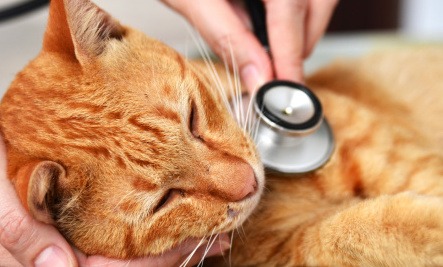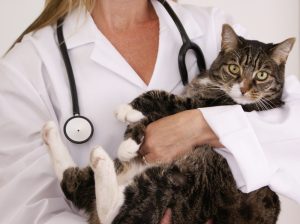Cat upper respiratory infection
Just like any other living being, cats can also catch a cold. This scenario is generally termed as cat upper respiratory infection. This infection is a result of a number of bacteria and viruses.
Causes of the infection
Upper respiratory infection (or chlamydia) in the cats can be a result of bacteria or viruses. It is easy for kittens to catch this infection because they are less immune but this infection can be found in adult cats too. These infection causing bacteria and viruses are mostly found in shelters or places where there are too many cats together.
This increases the chances of spreading of bacteria and viruses such as feline viral rhinotracheitis or commonly known as Feline Herpesvirus Type-1, Chlamydiophila felis, Feline calicivirus, Bordetella Bronchiseptica. These few virus and bacteria are very much common in cats that are infected with a URI.
Cats living in shelters are generally kept with other breeds of animals which can cause bacteria to spread. The more crowded the place is, the higher is the chance of a cat getting infected. Mostly, it is the virus that infects the cats because Feline Herpesvirus and calicivirus have a higher tendency to infect because of being highly communicable.
This infection can also be passed through the litters that the cats use as the infection is present in their saliva or any other discharge coming out of their body. Also, a cat getting in contact with a sick cat can spread the virus. And it does not only depend on the touch which means even if the cat does not get in touch with the animal having this infection, the cat can still get infected if it is anywhere near the animal because it can spread through coughing or sneezing.
This infection shows airborne properties so it can be concluded that it is highly communicable. There is no stopping the infection as there is no vaccine that can prevent a cat from getting URI.
What are the Symptoms?
Whether it is a fever, cold or any other diseases that make you sick, there are always symptoms. Symptoms generally depend on what kind of infection, it is or the causes of it. Following are the symptoms of upper respiratory infection in cats:
1. Watery eyes
2. Discharge out of nose and eyes
3. Sneezing
4. Loss of appetite
5. Distress and dejection
6. Fever
7. Shortness of breath
8. Coughing
These are some of the symptoms on the basis of which you can check if your cat is infected with a URI or not. If you are unable to determine the symptoms, then you can take the cat for a full medical check-up where a thorough checkup can identify the cause of infection. A medical check-up can give you more details about the infection. But generally in the case of URI, the symptoms are pretty much visible. So, the owner can easily identify the cause.
Treatment
Usually, when the symptoms are determined, then you can take the cat to a veterinarian. A vet can prescribe the required antibiotics and he/she will also let you know if there is any need to keep your cat in the hospital for the treatment. Antibiotics given to the cats are mainly in such form so they can be easily ingested orally by the cat. For redness of the eyes and stopping the discharge, they use eye drops for clearing the eyes. The treatment of URI can take a month. If you’ll follow the vet’s advice then your cat can become healthy and free of infection.
Home Remedies
First thing first, try to clean your cat’s eyes. For that ask your vet for the eye drops. This way the eye drops will clear your cat’s eye and you can clean up the mess that forms around its eyes. Now, to treat the cold at home, try to give your cat a steam. This steam is same as you give yourself when you get sick.
Try to keep your cat warm. Generally, cold weather can give them chills if they are sick. So try to keep your cat’s temperature up with the help warm bottles or warm sheets. Try to clean the discharge from their nose and eyes as it is infectious and can irritate the cat. Use a damp cloth to clean the mess.
Ask your vet for antibiotics, as antibiotics are usually recommended in case of URI. Antibiotics prevent your cats from getting sicker or catching other infection while they are being treated with one infection. It may take some time before your cat becomes healthy.
Doctors usually suggest that a time of 3-4 weeks is enough for the cats to become fit and free of infection. If you haven’t visited the vet and have been treating your cat at home, then make sure that within 3 weeks you see the results and if not then take your cat to the vet for the treatment as the infection can get worse if not treated.
Prevention
The first thing that stops viruses from spreading in the body’s immune system. If the immune system of cats is not strong, then URI can spread rapidly. The immune system can be strengthened by a lot of ways. A healthy and stress-free environment plays a big role in making the immune system strong.
To prevent your cat from getting infected, try to keep your cat indoors and if the cat is living in a shelter with other cats or animals then try to keep them isolated or you can make sure that all the animals are healthy by getting regular health checkups.
Don’t forget to keep cleanliness around the shelter. The infection itself cannot be prevented, but you can always take precautions such as cleaning your hands before touching the cat or taking your cat to the regular health-examination. Also, make sure that your cat gets vaccinated periodically. Vaccinations cannot stop the infection, but they can help in preventing the infection from getting worse.


